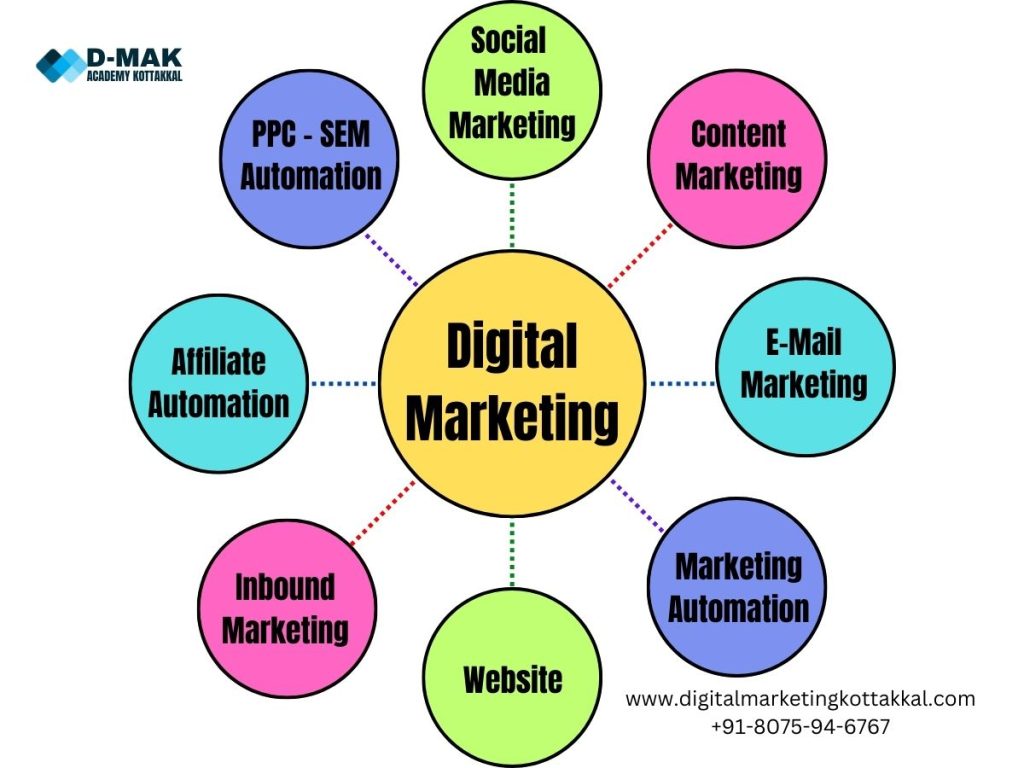There are several subtypes of digital marketing, each with a distinct function and audience in mind. The following are some typical areas of digital marketing:

Search Engine Optimization (SEO): Enhancing a website’s content and structure for improved organic (non-paid) presence in search engine results pages is known as search engine optimisation, or SEO (search engine results page). The goal of SEO is to increase a website’s ranking for relevant search queries in order to increase visitors.
Search Engine Marketing (SEM): Paid advertising on search engines such as Google is a component of Search Engine Marketing (SEM). Pay-per-click (PPC) campaigns are among them; in these, marketers bid on keywords to display their adverts in search engine results. Other paid search techniques including display advertising, retargeting, and shopping adverts are also included in SEM.
Content Marketing: Content Marketing: The goal of content marketing is to draw in and keep the attention of a certain audience by producing and disseminating informative, timely information. Blog entries, articles, podcasts, videos, infographics, eBooks, and more can all be considered forms of content. Building brand recognition and giving potential buyers helpful information are the objectives.
Social Media Marketing (SMM): SMM include promoting goods and services using social media sites like Facebook, Instagram, Twitter, LinkedIn, and Pinterest. It involves tasks including making and disseminating content, managing sponsored advertising campaigns, interacting with followers, and keeping an eye on social media discussions.
Email Marketing: Email marketing is the practice of delivering newsletters or targeted promotional communications to a list of subscribers. It is employed to develop client connections, nurture leads, advertise goods and services, and increase revenue. Campaigns for email marketing may be tailored to the interests and actions of subscribers.
Influencer Marketing: Influencers with a significant following on social media or other digital platforms may reach a wider audience and exert more influence thanks to influencer marketing. Influencers and brands work together to market products and services to their audience, usually through partnerships or sponsored content.
Affiliate Marketing: With affiliate marketing, companies pay publishers and influencers (affiliates) a commission for each referral or sale that the affiliates successfully drive to their website. Affiliate marketing is a performance-based approach.
Mobile Marketing: Reaching and interacting with consumers on mobile devices, including smartphones and tablets, is the main goal of mobile marketing. It covers strategies including location-based targeting, SMS marketing, in-app advertising, mobile applications, and websites that are optimised for mobile devices.
Video Marketing:
Producing and disseminating videos with the purpose of enlightening, amusing, or influencing a viewership is known as video marketing. It may be shared by email, websites, social media, YouTube, and other channels. Storytelling, product or service showing, and brand exposure are all facilitated by video marketing.
These categories frequently overlap, and a successful digital marketing plan may combine a number of techniques that are each suited to a company’s unique objectives and target market.